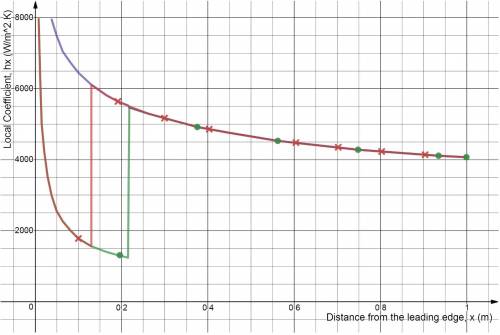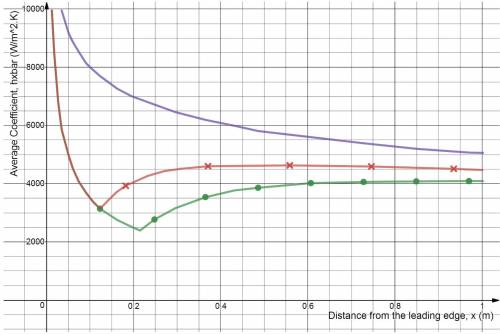
Engineering, 08.04.2020 21:25 andrejr0330jr
Consider water at 27°C in parallel flow over an isothermal, 1‐m‐long flat plate with a velocity of 2 m/s. a) Plot the variation (in MATLAB or Excel) of the local heat transfer coefficient, hx(x), with distance along the plate for three flow conditions corresponding to critical (transition) Reynolds numbers of (i) 5 × 10^5, (ii) 3 × 10^5, and (iii) 0 (the flow is fully turbulent). b) Calculate the average heat transfer coefficients for the entire plate for the three flow conditions of part (a)?

Answers: 1


Another question on Engineering

Engineering, 03.07.2019 15:10
If you were designing a bumper for a car, would you prefer it to exhibit elastic or plastic deformation? why? consider the functions of a bumper in both a minor "fender-bender" and a major collision.
Answers: 1

Engineering, 04.07.2019 18:10
Afull journal bearing has a journal diameter of 27 mm, with a unilateral tolerance of -0.028 mm. the bushing bore has a diameter of 27.028 mm and a unilateral tolerance of 0.04 mm. the l/d ratio is 0.5. the load is 1.3 kn and the journal runs at 1200 rev/min. if the average viscosity is 50 mpa-s, find the minimum film thickness, the power loss, and the side flow for the minimum clearance assembly.
Answers: 1

Engineering, 04.07.2019 18:10
Ajournal bearing has a journal diameter of 3.250 in with a unilateral tolerance of 20.003 in. the bushing bore has a diameter of 3.256 in and a unilateral tolerance of 0.004 in. the bushing is 2.8 in long and supports a 700-lbf load. the journal speed is 900 rev/min. find the minimum oil film thickness and the maximum film pressure for both sae 20 and sae 20w-30 lubricants, for the tightest assembly if the operating film temperature is 160°f. a computer code is appropriate for solving this problem.
Answers: 3

Engineering, 04.07.2019 18:10
The thermal expansion or contraction of a given metal is a function of the f a)-density b)-initial temperature c)- temperature difference d)- linear coefficient of thermal expansion e)- final temperature f)- original length
Answers: 2
You know the right answer?
Consider water at 27°C in parallel flow over an isothermal, 1‐m‐long flat plate with a velocity of 2...
Questions


History, 25.07.2019 22:30

Social Studies, 25.07.2019 22:30






Mathematics, 25.07.2019 22:30


History, 25.07.2019 22:30









Mathematics, 25.07.2019 22:30





